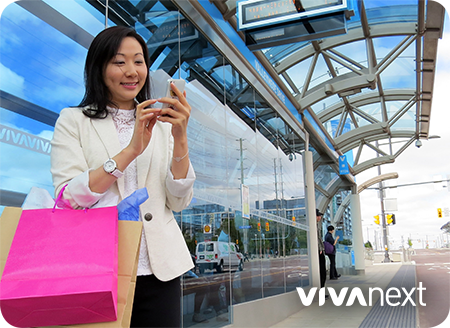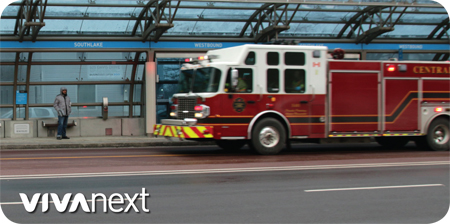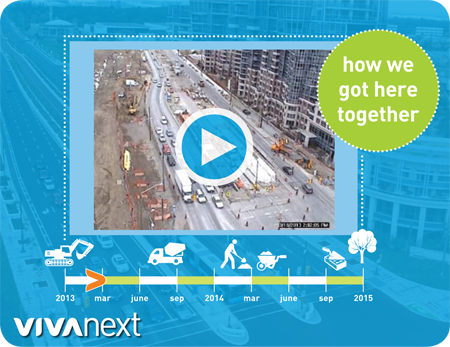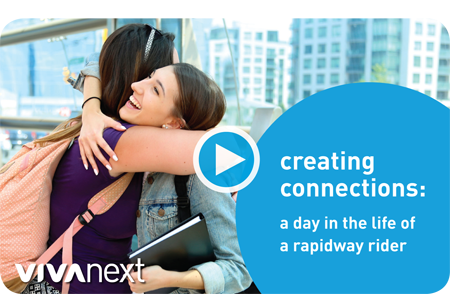At 220 years old, Yonge Street is one of the GTA’s oldest roads, and before it was a road it was likely a trail. Since the beginning, it’s been improved upon and extended. Transit has always been a component of the street, starting with horse-drawn stagecoaches, then streetcars, trains and buses. It’s always been a local road that people walk and bike along, as well as a commuting road for longer distances.
Today, Yonge Street is changing again. We’re building dedicated lanes for transit – rapidways – in Richmond Hill from Highway 7 to 19th/Gamble and in Newmarket from Savage Road/Sawmill Valley Drive to Davis Drive. It’s part of a big plan for a seamless transit system in York Region and the Greater Toronto and Hamilton Area. The Yonge Street rapidway will connect to the Highway 7 rapidways leading to Markham and Vaughan, and to the future Spadina Subway Extension and Yonge Subway Extension.
Once complete, Viva service along Yonge will have faster and more reliable travel times, and traffic congestion will be reduced. Modern transit will be on the doorsteps of people living and working along Yonge Street, and the tree-lined sidewalks and bike lanes will make Yonge an even more attractive, vibrant place to walk, shop and ride. With people at all stages of life using this important street, transit continues to play a key role.
There is a lot of work happening in 2016, and we’re keeping everyone informed. You can find facts and maps on the project page on our website, and we’ll be at some local community events this summer. We’re also on Twitter and Facebook, and we have some project videos on YouTube. If you would like to contact us directly, our Community Liaisons are available to talk. If you sign up for email updates, we’ll let you know when work is happening and you’ll receive announcements, project newsletters, and an invitation to an open house we’ll be hosting later this year.










